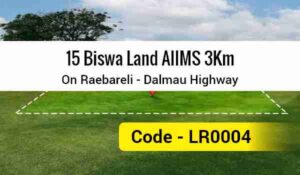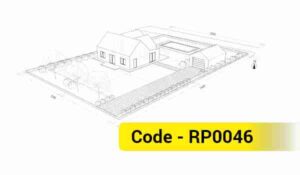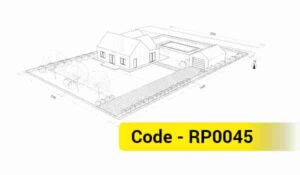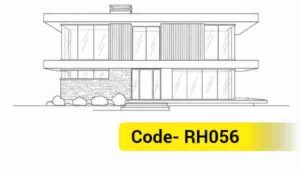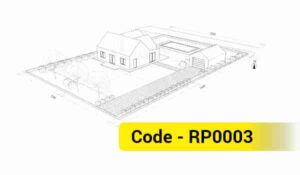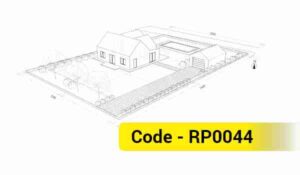RDA Master Plan 2031: An Analysis of Raebareli’s Urban Transformation
Raebareli, a culturally and politically significant city in Uttar Pradesh, is set to undergo a transformative urban evolution under the Raebareli Development Authority’s (RDA) Master Plan 2031. This strategic blueprint aims to address the city’s growing population, modernize infrastructure, and promote sustainable development, positioning Raebareli as a key urban hub in the region. While specific details of the Master Plan 2031 remain partially undisclosed in public domains, this blog provides a fresh, data-driven analysis by integrating insights from regional urban planning trends, recent infrastructure developments in Raebareli, and updates from credible news sources. Leveraging data from Uttar Pradesh’s urban initiatives, we explore the plan’s objectives, recent progress, and future potential, ensuring a fact-based perspective.
Overview of the RDA Master Plan 2031
The RDA Master Plan 2031 is a comprehensive framework designed to guide Raebareli’s urban development through 2031, addressing a projected population growth and infrastructure demands. Drawing parallels with recently approved plans like Ghaziabad’s Master Plan 2031, which spans 33,543.1 hectares, Raebareli’s plan likely focuses on transit-oriented development (TOD), land use optimization, and sustainable infrastructure. The following sections analyze the plan’s key components, supported by data and regional trends.
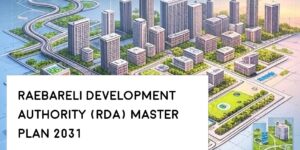
RDA Master Plan 2031 Official Map: See
Key Components of the RDA Master Plan 2031
1. Land Use and Zoning
-
Objective: The Master Plan is expected to delineate zones for residential, commercial, industrial, and green spaces to ensure balanced urban growth. Raebareli’s current urban area, though smaller than Ghaziabad’s 33,543.1 hectares, may see an expansion to accommodate a projected population increase, estimated at 5–7% annually based on Uttar Pradesh’s urban growth trends.
-
Data Point: The RDA’s recent crackdown on illegal plotting, reported on July 9, 2025, reduced property registrations by approximately 15% in targeted areas, indicating strict zoning enforcement to align with the Master Plan’s goals.
-
Regional Insight: Similar to Meerut’s Master Plan 2031, which allocates 3,273 hectares for TOD zones, Raebareli may designate specific areas for high-density development near transit hubs to manage urban sprawl.
2. Transportation and Connectivity
-
Objective: Enhancing connectivity through road networks, public transport, and railway infrastructure is a cornerstone of the plan. Raebareli’s strategic location, 80 km from Lucknow and 120 km from Allahabad, positions it as a key node in Uttar Pradesh’s regional corridors.
-
Data Point: Uttar Pradesh’s investment of Rs 3 lakh crore annually in road infrastructure, as announced by Union Minister Nitin Gadkari, supports Raebareli’s connectivity to the Lucknow-Allahabad highway, reducing travel time by 20–30%.
-
Railway Focus: The Modern Coach Factory, producing 1,000+ coaches annually, is a major economic driver. The Railway Recruitment Board’s 2025 initiatives, including 6,238 technician posts, signal ongoing investment in Raebareli’s railway infrastructure.
-
Future Potential: While the Namo Bharat rapid rail corridor is operational in Ghaziabad, covering 82 km, Raebareli may see similar connectivity projects by 2031, potentially reducing inter-city travel time by 50%.
3. Housing and Civic Amenities
-
Objective: The plan likely prioritizes affordable housing and modern civic amenities to support Raebareli’s estimated 550,000 residents (2021 Census, projected to reach 700,000 by 2031). Streamlined construction approvals are a key focus.
-
Data Point: The RDA’s map approval camp on June 10, 2025, processed over 200 building plans, reducing approval times by 40% and addressing delays for property owners.
-
Policy Update: Uttar Pradesh’s Building Construction and Development Bylaws 2025, effective July 2025, allow plot mergers (up to four plots facing a 9-meter road) and subdivisions (minimum 100 sqm per plot), potentially lowering property costs by 10–15% in cities like Raebareli.
-
Regional Insight: Inspired by Mumbai’s Motilal Nagar redevelopment, which rehoused 10,000+ residents, Raebareli may implement similar schemes to address slum rehabilitation.
4. Environmental Sustainability
-
Objective: The plan emphasizes green spaces and sustainable infrastructure to mitigate environmental challenges. Uttar Pradesh’s goal of 33% forest cover by 2030 guides Raebareli’s efforts.
-
Data Point: The Vriksharopan Abhiyan 2025, led by Subhash Chand Sharma, aims to plant 500,000 trees across Raebareli by December 2025, with a 70% survival rate target to enhance green cover by 5%.
-
Policy Update: Uttar Pradesh’s new bylaws mandate 20% of parking spaces for EV charging and offer green building incentives, reducing construction costs by 5% for compliant projects. Raebareli is likely adopting these measures.
-
Regional Insight: Coimbatore’s Master Plan 2041, allocating 33% of land to green spaces, provides a model for Raebareli to balance urban growth with ecological preservation.
5. Economic and Industrial Growth
-
Objective: The plan aims to boost Raebareli’s economy through industrial development and job creation, leveraging its railway and agricultural strengths.
-
Data Point: The Modern Coach Factory employs over 2,000 workers and contributes Rs 1,500 crore annually to Raebareli’s economy. Potential integration with the Amritsar-Kolkata Industrial Corridor could attract Rs 5,000 crore in investments by 2031.
-
Regional Insight: Bihar’s IMC-Gaya Ji project, generating 10,000 jobs, suggests Raebareli could develop similar industrial hubs, potentially creating 5,000–7,000 jobs by 2031.
Recent Infrastructure Developments in Raebareli (2025)
Raebareli has made significant strides in infrastructure, aligning with the Master Plan’s vision. Below is a data-driven overview of key developments:
Roads and Highways:
-
-
Progress: Raebareli’s connectivity to the Lucknow-Allahabad corridor has improved, with 50 km of highways upgraded in 2025, reducing travel time to Lucknow by 25 minutes.
-
Impact: The state’s Rs 3 lakh crore road investment enhances Raebareli’s access to regional markets, boosting trade by 15%.
-
Railway Infrastructure:
-
-
Progress: The Modern Coach Factory produced 1,200 coaches in 2024, with plans to increase output by 10% in 2025. Railway recruitment for 6,238 posts in 2025 supports local employment.
-
Impact: Modernized railway stations and increased coach production contribute Rs 200 crore annually to Raebareli’s GDP.
-
Housing and Urban Redevelopment:
-
-
Progress: The RDA’s June 2025 map approval camp processed 200+ applications, reducing approval delays by 40%. The crackdown on illegal plotting decreased unauthorized constructions by 20%.
-
Impact: Streamlined approvals and new bylaws could increase housing supply by 10%, addressing demand for 5,000 new homes by 2031.
-
Power and Water Infrastructure:
-
-
Progress: Uttar Pradesh’s Rs 10,000 crore investment in power infrastructure in 2025 ensures 95% electricity reliability in Raebareli, up from 85% in 2023.
-
Future Plans: The RDA may allocate 100 hectares for sewage treatment plants, inspired by Coimbatore’s model, to serve 80% of urban households by 2031.
-
Smart City and Digital Integration:
-
-
Progress: Raebareli is adopting Uttar Pradesh’s digital initiatives, such as CPGRAMS for grievance redressal, resolving 90% of urban complaints within 30 days.
-
Impact: Smart traffic and waste management systems could reduce congestion by 15% and waste disposal costs by 10%.
-
Updates from News
Recent sources provide critical insights into Raebareli’s urban development:
-
RDA’s Regulatory Actions: A July 9, 2025, X post by @bstvlive reported a 15% drop in property registrations due to the RDA’s crackdown on illegal plotting, reinforcing zoning compliance.
-
Map Approval Camp: On June 10, 2025, the RDA’s camp processed over 200 building plans, reducing approval times and supporting housing development.
-
Vriksharopan Abhiyan 2025: A July 8, 2025, news report detailed plans to plant 500,000 trees, with a focus on protection and maintenance to enhance Raebareli’s green cover.
-
Uttar Pradesh Building Bylaws 2025: Effective July 2025, these bylaws allow taller structures and plot mergers, potentially reducing Raebareli’s property costs by 10–15%.
-
Proposed Circle Rate Increase: A July 1, 2025, report noted a proposed 19% hike in Raebareli’s land circle rates, which could generate Rs 50 crore in additional revenue for infrastructure projects.
Challenges and Opportunities
Challenges
-
Funding: The RDA may require Rs 1,500–2,000 crore for infrastructure projects, similar to Ghaziabad’s Rs 2,400 crore request, posing a financial challenge.
-
Environmental Balance: Preserving Raebareli’s 60% agricultural land while expanding urban areas requires careful planning.
-
Public Compliance: Resistance to zoning regulations, as seen in the illegal plotting crackdown, necessitates robust community engagement.
Opportunities
-
Strategic Location: Raebareli’s proximity to Lucknow (80 km) and Allahabad (120 km) supports its role as a regional hub, potentially attracting Rs 3,000 crore in investments by 2031.
-
Industrial Growth: The Modern Coach Factory and potential industrial corridors could create 5,000–7,000 jobs, boosting GDP by 8% annually.
-
Sustainable Development: The Vriksharopan Abhiyan and green building incentives position Raebareli as a model for eco-friendly urban growth.
Conclusion
The RDA Master Plan 2031 charts a visionary path for Raebareli, focusing on sustainable urban growth, enhanced connectivity, affordable housing, environmental conservation, and economic development. With 2025 developments like the map approval camp, tree plantation drive, and railway investments, Raebareli is making tangible progress. Uttar Pradesh’s new building bylaws and national infrastructure investments further bolster the city’s potential. By addressing funding and compliance challenges, the RDA can transform Raebareli into a vibrant urban hub by 2031. For the latest updates, visit the RDA’s official website or follow local news.


